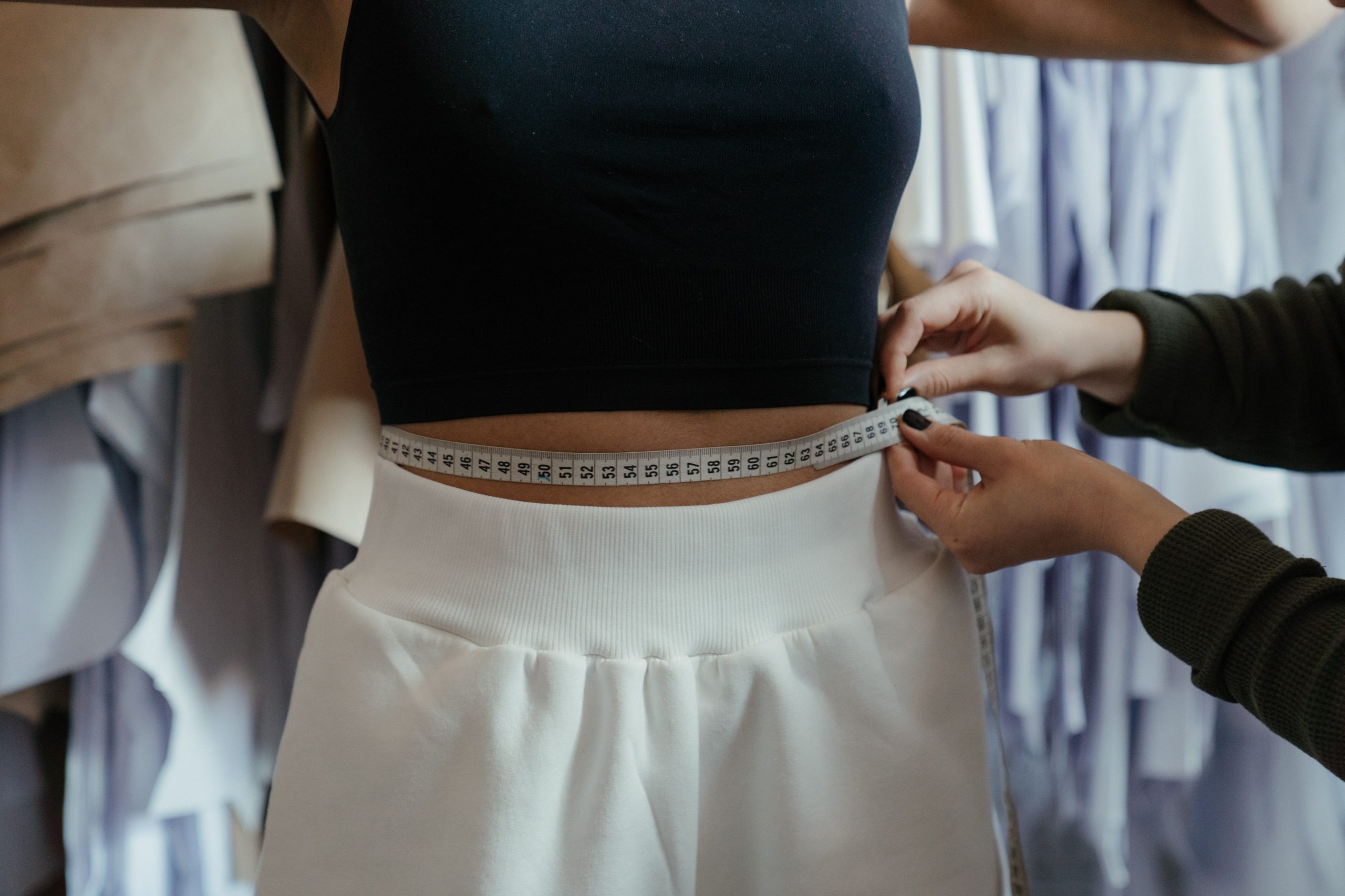Sewing gives you the freedom to make beautiful garments in an array of fabrics. Whether you use a sewing machine or stitch by hand, the key to getting bespoke clothes that fit perfectly is to abide by a few essential basic body measurement rules before sewing.
What are body measurements in sewing?
Whether you’re sewing garments for yourself or others, body measurements are the dimensions of body parts you’ll be making clothes for. As each person will have unique proportions, it’s important to get correct measurements so their clothes will sit comfortably. Once you have the measurements, it can help you choose the right size patterns and fabrics or adjust a pattern to suit the recipient.
As well as helping you make clothes from scratch, accurate body measurements allow you to take in or let out clothing that needs altering.
Basic body measurements for sewing
Depending on the type of garment you’re making, you will need measurements for different body parts. However, as a starting point, there are six basic body measurements it’s key to know before sewing.
Height – the measurement from the top of the head to the floor.
High bust – the circumference at the crook of the armpits, about two inches above the bust.
Full bust – the circumference at the widest part of the bust.
Natural waist – the circumference at the narrowest part of the waist.
Hips – the circumference at the widest part of the hips, usually about seven inches below the natural waist.
Back waist length – the length from the bone at the base of the neck to the natural waistline.
Other body measurements you may need include arm length, shoulder, or leg inseam for trousers.
Body measurement rules
Now you know which dimensions to measure, here are some guidelines to make taking body measurements as straightforward and accurate as possible.
Use a tape measure that doesn’t stretch
Whether you’re following a dress pattern, altering garments, or designing your own clothing from scratch, it’s essential to use an accurate tape measure. Over time, fabric tapes can stretch, skewing the measurements. Also, take note of whether the tape measure is in inches, centimetres, or both so you can match the measurements to your pattern.
Don’t measure over bulky clothes
Try to take measurements over undergarments or a leotard, rather than bulky jeans or jumpers. Loose clothing can affect the accuracy of your numbers.
Don’t pull the tape measure too tight
It can be tempting to hold the tape measure snugly against the body for a more flattering reading. But ultimately, this will result in ill-fitting clothes. Hold the tape close but not too tight against the body.
Try not to take your own measurements
If you’re sewing garments for yourself, try and find a helpful friend to take your measurements. They will be more accurate and result in a better fit — honesty is vital!
Tie a ribbon around the natural waistline
It can be helpful to loosely tie a ribbon or piece of string around the narrowest part of the waist to mark it. This visual clue will give you more precise hip measurements.
Keep the tape measure parallel to the ground
When measuring the circumference of different body parts, keep the tape measure level and parallel to the ground, rather than slanting.
Record the numbers
Write down the measurements as you take them rather than trying to remember later on.
The right sewing equipment
Whether you’re sewing for yourself or others, having a good-quality tape measure is essential for taking accurate measurements. And if you’re looking for the best sewing machines and materials for making garments, why not contact our Franklins experts? We’d be thrilled to help answer any questions you have.

